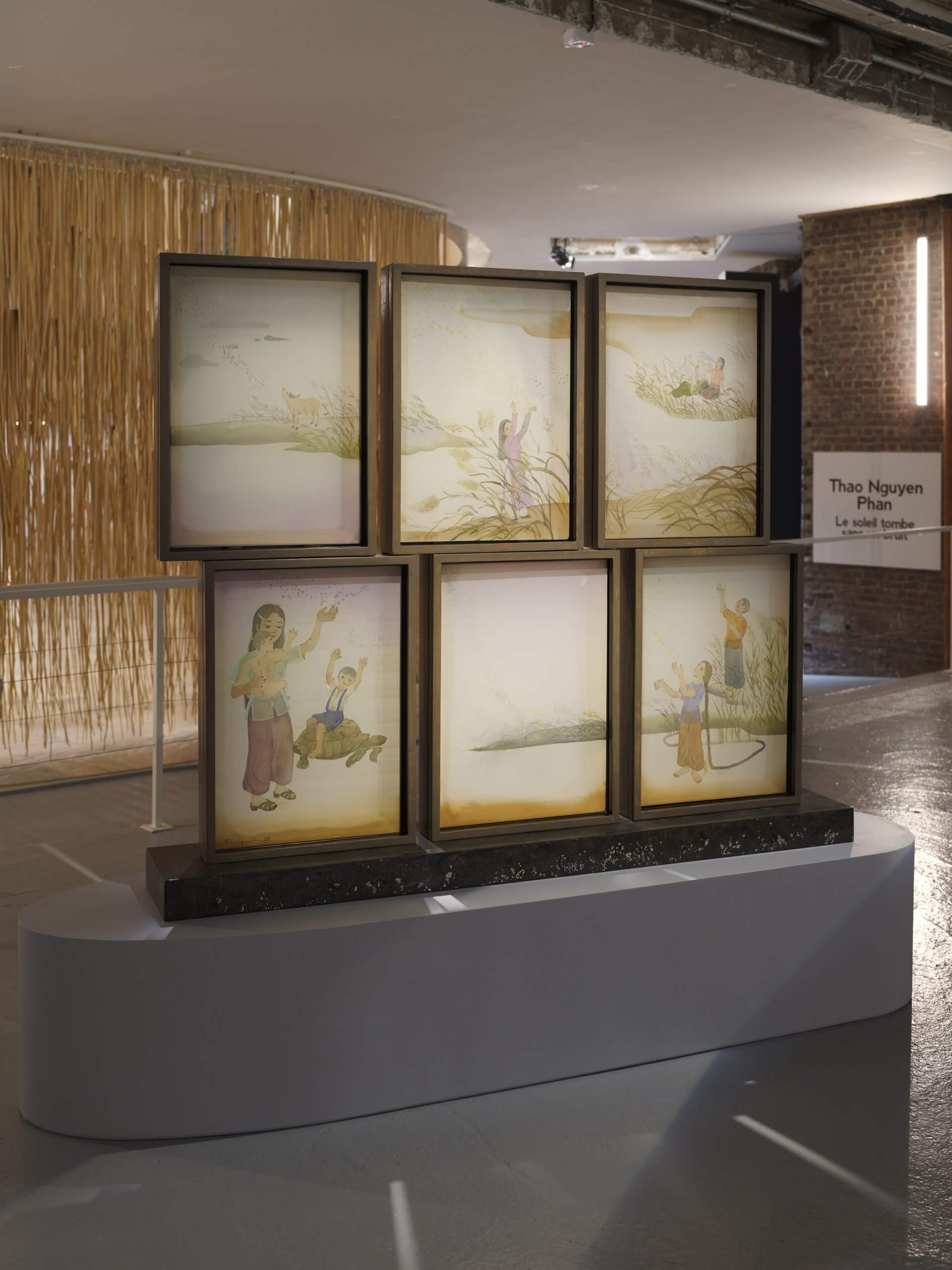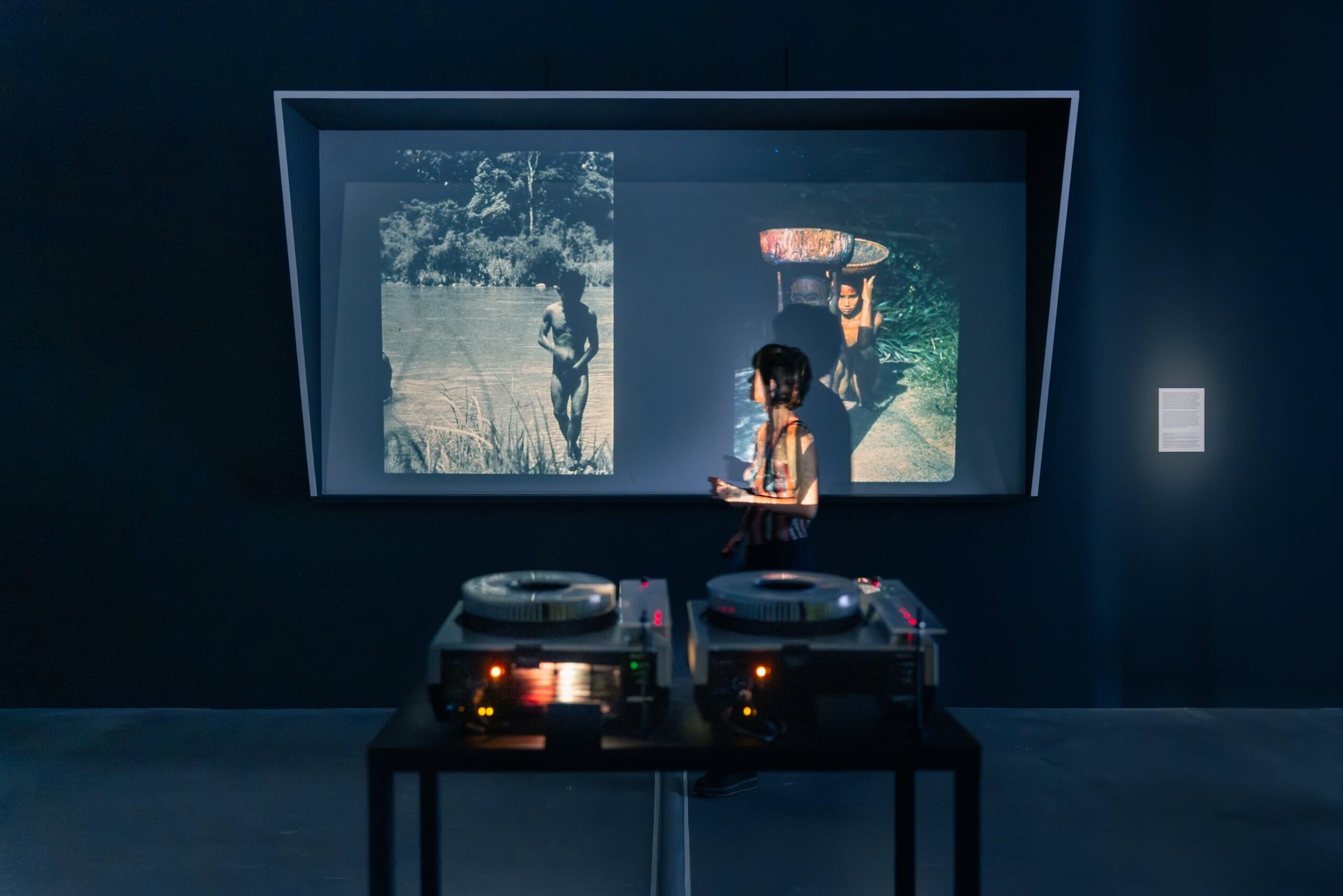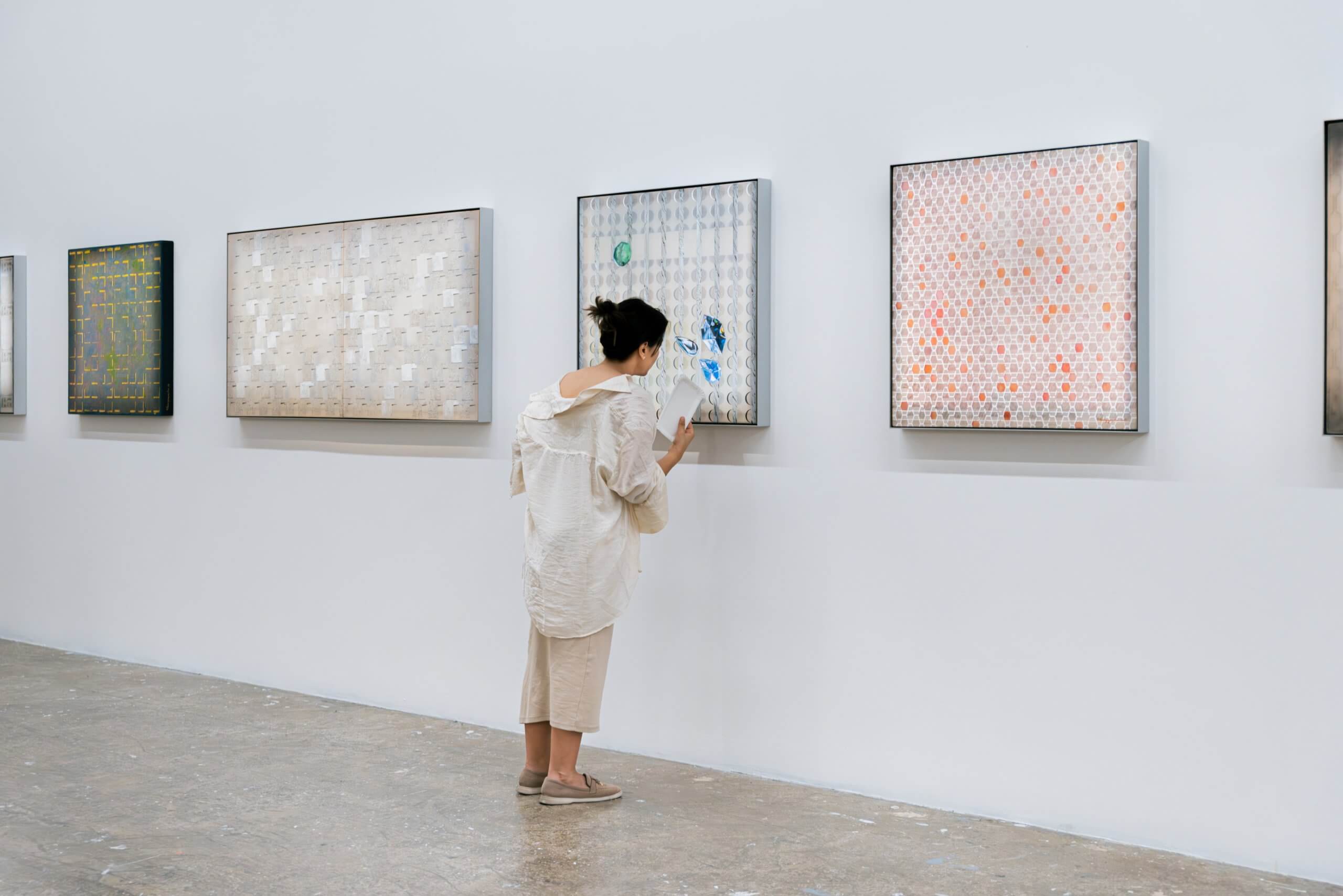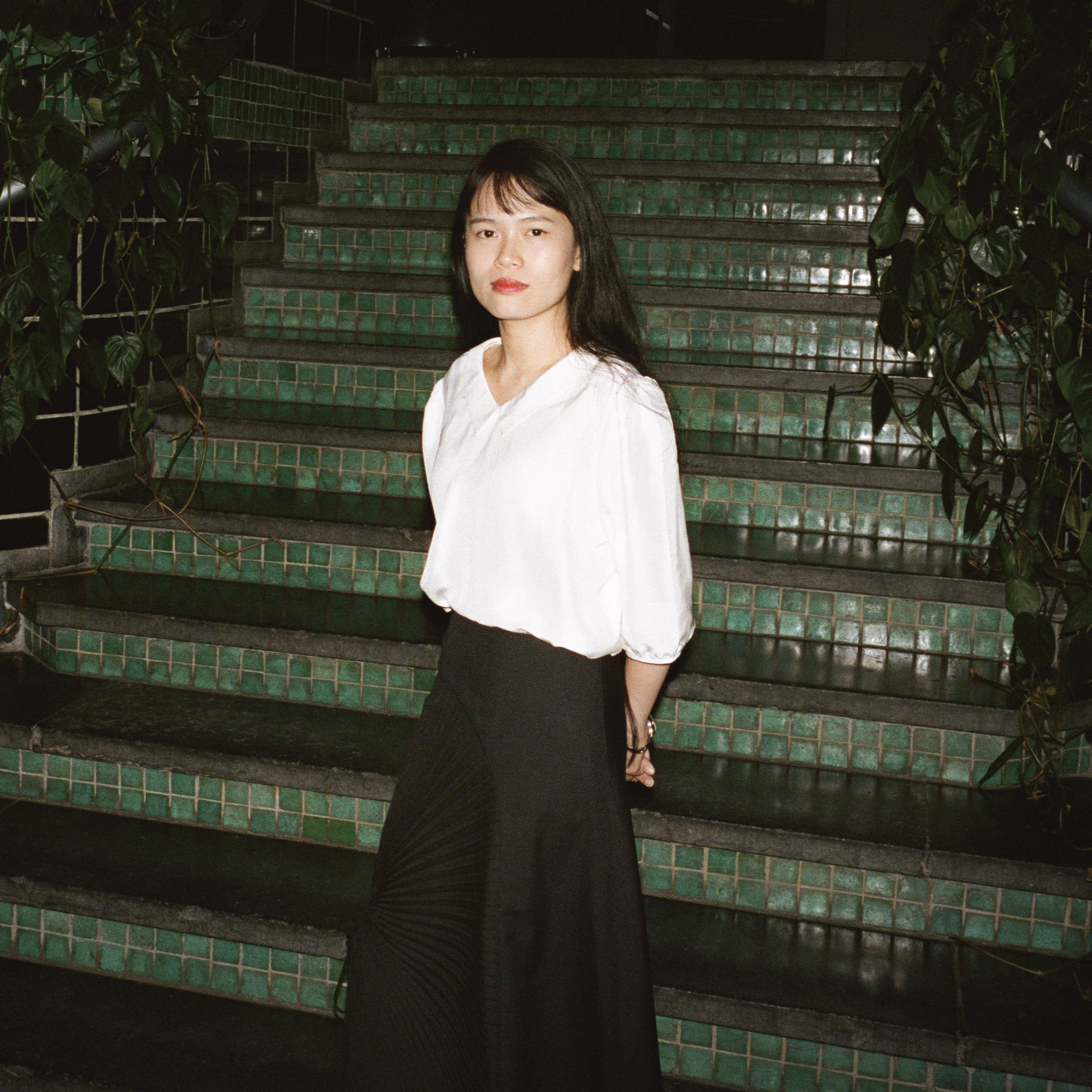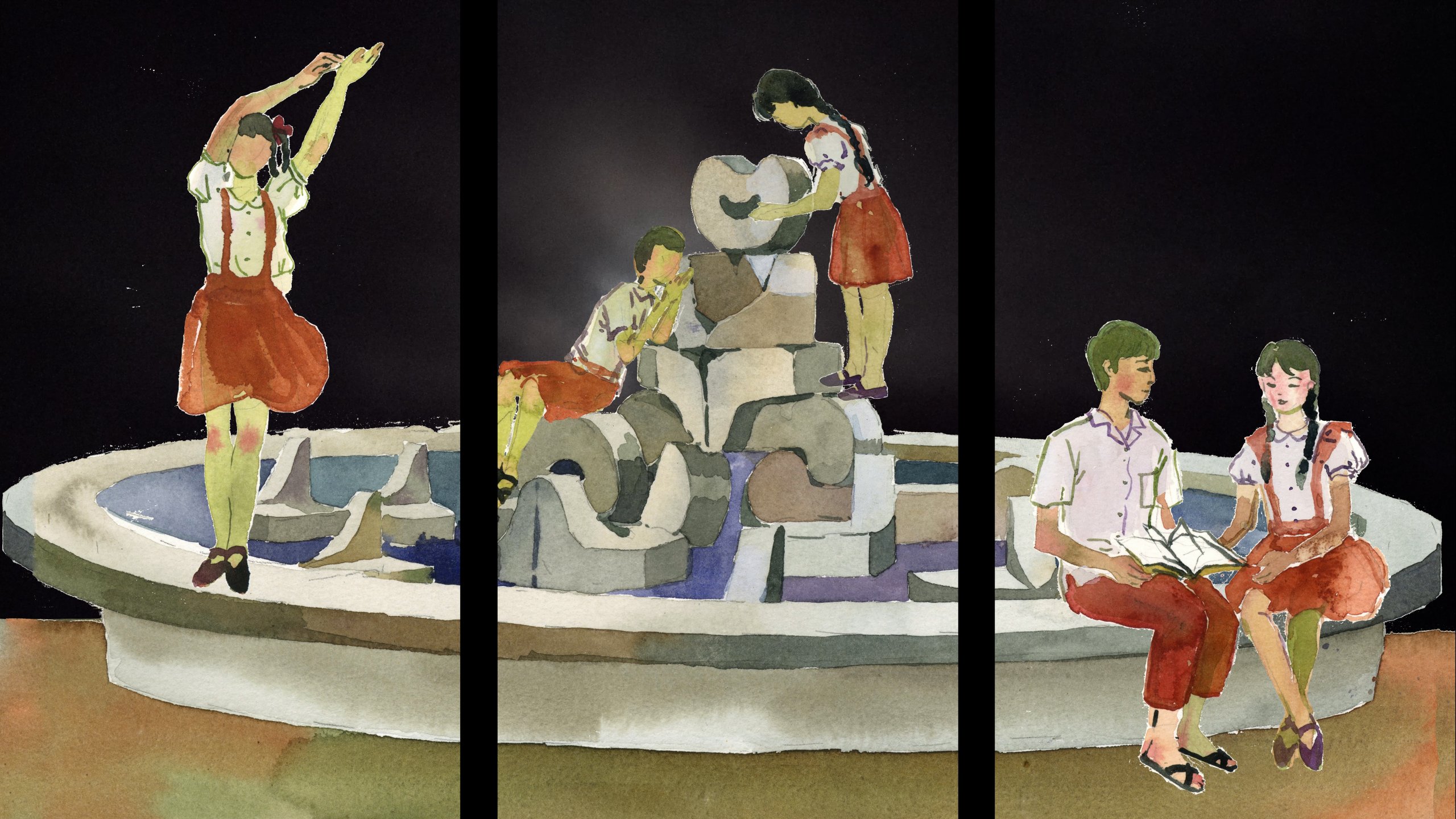SEARCH THE ENTIRE SITE
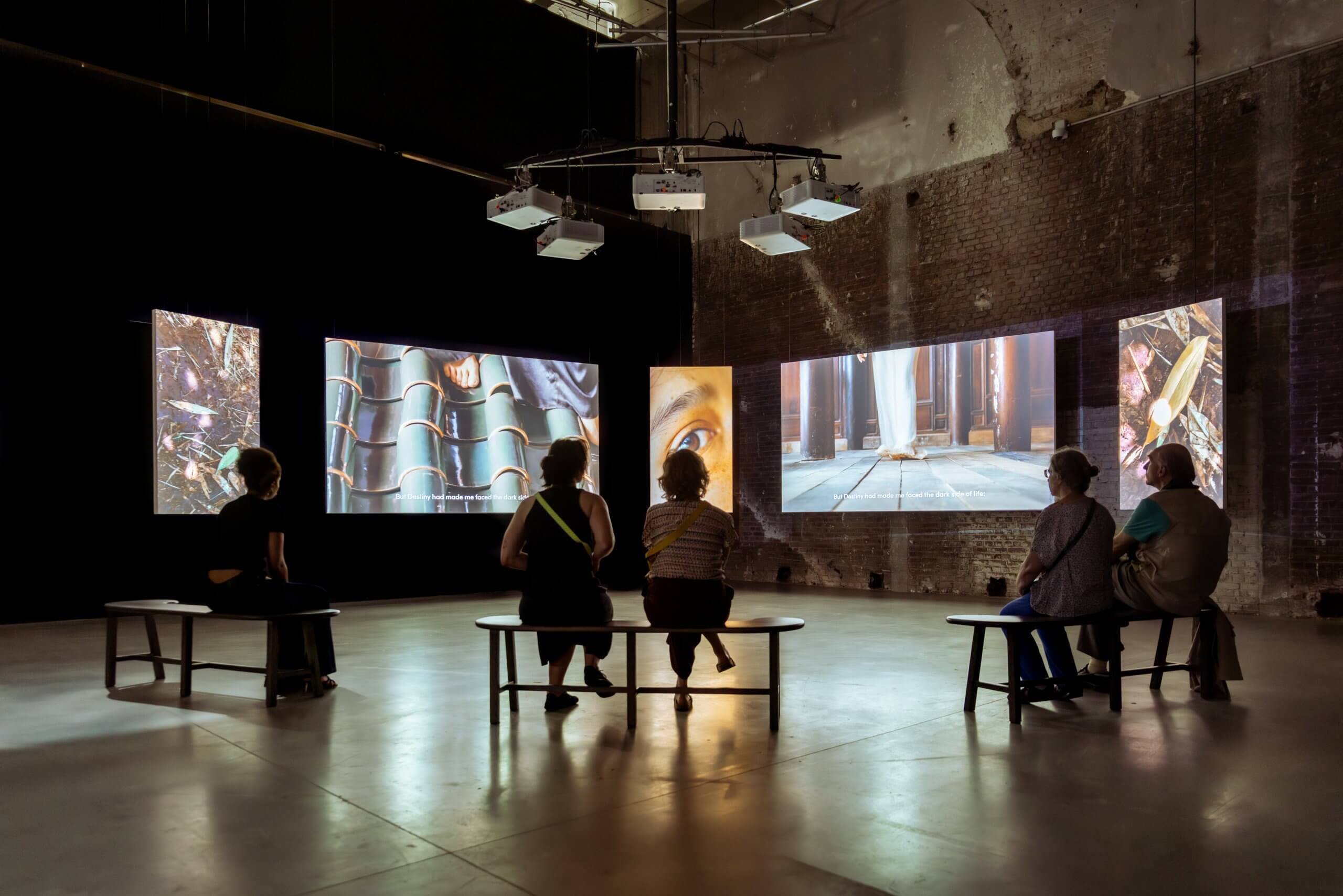
Interview with Thao Nguyen Phan
So, to start, how would you define your artistic practice ?
Thao Nguyen Phan:My artistic practice explores the intersection of fine art mediums with social sciences, demonstrating how various disciplines can converge to offer deeper insights into our history. I develop a creative process that combines academic research, meeting people, and collecting archival materials. When I meet a subject, I usually transform it into a very loose way of combining different materials to create a zone of thinking regarding the subject matter. I was trained as a lacquer and silk artist* at the Ho Chi Minh City University of Fine Arts before going to Chicago, and after that, I was really engaged with the process of video making under the mentorship of Joan Jonas¨*, as a Rolex Mentor and Protegée. My projects often start as watercolor drawings, which I then develop into expanded forms such as installations or moving images.
What was the starting point of your exhibition at the Palais de Tokyo?
TNP:The first element that combined my practice with the Palais de Tokyo is probably the figure of Diem Phung Thi. As a trained dentist who moved to France in 1948, she only started to work as an artist in her late 40s. She is now recognised, but in some ways still under-discussed, at least in France. In the Vietnamese context, she is an extremely important figure. Through Diem Phung Thi, the exhibition is conceived around the under-discussed narrative of other figures. Sometimes they could be problematic, such as Alexandre de Rhodes, who was a colonial figure, or Jacques Dournes. I’m intrigued by figures who are viewed with nuance and complexity. They are multifaceted individuals with unique paths and perspectives, and I’m interested in bringing them together through my voice to offer a new lens on these subjects.
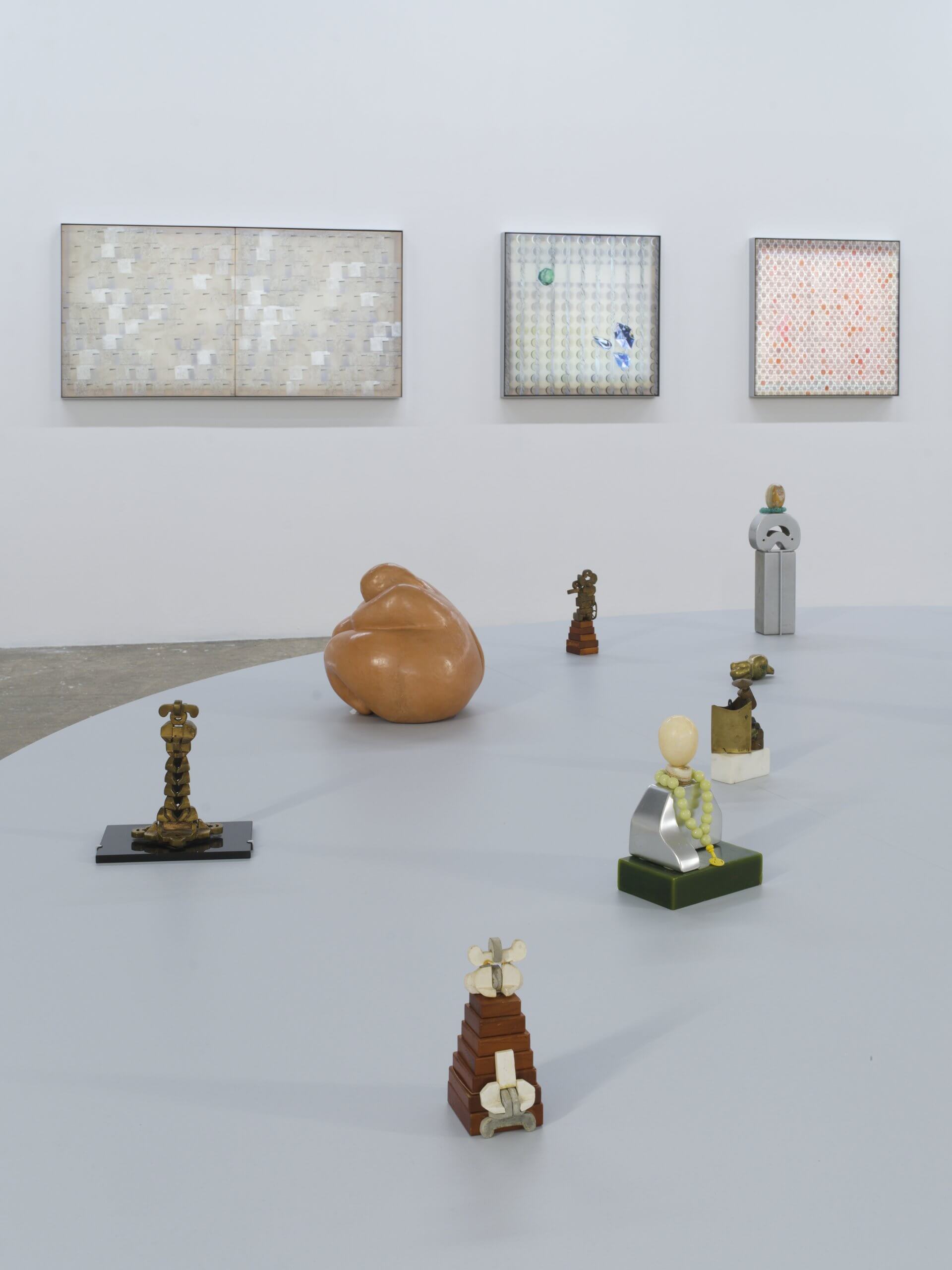
Could you explain the title of the exhibition “The Sun Falls Silently” ?
TNP:It talks about time, history, and the power of image. I would like to borrow the words of a friend who is a Japanese curator : The Setting Sun is one of my favorite stories from Yasunari Kawabata’s Palm-of-the-Hand Stories. I reread it and felt it was like watching moving images. It juxtaposes people living along different axes of time : past, present, and future. The narrative seems to shift like a film, alternating between slow motion and fast forward. In the line ‘The sun slipped down in silence’, time passes very quickly, almost instantaneously, whereas the line ‘The people walking on the street slowed their steps for three paces’ evokes the image of steps briefly suspended in time. Did you happen to know that this story was written in 1925 ? Exactly 100 years ago. It was a time when Kawabata was under the influence of Surrealism, which created a sense of timeless connection that feels resonant in the context of your exhibition in Paris. And as you read his books in your school textbook, I find it quite moving to reflect the connection between Japan and Vietnam through the literature of Kawabata.”
Vietnam’s history appears to be a key element in your work, while you also explore Southeast Asia’s historical and cultural heritage.
TNP:The history of Vietnam is important as a starting point, but it’s not an absolute representation of the exhibition. The way the audience approaches the work is not only to know what happened in Vietnam, but also what is the essence and the poetry the mediums can provoke. The relevance of the narrative from the Vietnamese context is more prominent in the combination of painting and moving image.
Also, my concern with historical and cultural heritage is rooted in my interest in the Mekong River and the cultural narratives embedded within it. In my previous work Becoming Alluvium (2019), I combined literary references from Marguerite Duras and Italo Calvino with local folklore from the Mekong region in order to offer a new perspective on an area often mythologized, stereotyped, or economically exploited.
You investigate the relationships between Vietnam and France at different periods. How did you get interested in figures such as Alexandre de Rhodes or Jacques Dournes?
TNP:This interest comes from my experience in close contact with the Jarai people in Vietnam Central Highlands. I became aware of the introduction of Christianity to the community and the transcription of their oral language into Romanised script. Today, the only widely available book written in Jarai is probably the Bible. This led me to reflect on the predominantly Western, particularly French, figures who played a role in this linguistic and cultural shift. For example, Alexandre de Rhodes, a Jesuit missionary, came to Vietnam in the 17th century, and Jacques Dournes lived and worked in the Central Highlands in the 20th century. Though often problematic, they documented and described local ways of life through writing and observation. This connects to my broader interest in figures like Diem Phung Thi and in how visual and ethnographic elements are translated into coded representations that can be explored through the eyes of the artist.
Would you consider your work as a form of resistance or an alternative to dominant narratives ?
TNP:I like to give alternatives to dominant narratives, but it’s hard to frame art practice in the context of activism. It could rather be seen as giving alternatives to how to look at a truth that’s usually being erased or manipulated by other dominant powers. These powers could be ideological, historical, or colonial.
You invited the artist Truong Cong Tung to your exhibition; how did you imagine this collaboration ?
TNP:In the exhibition, two works by Truong Cong Tung resonate deeply with the theme. One of them is a text piece titled A Portrait of Absence. It’s based on a text by Jacques Dournes, who recorded oral stories from the Jarai people. The text was translated multiple times and eventually engraved on a mirror, highlighting how our perception is always shaped by layers of interpretations and, inevitably, blind spots. Even when we witness something directly, our understanding is never fully accurate. This is the idea of a fragmented or unreliable vision.
Transference is a site-specific work that evokes the fragility of life and our relationship with time. Sunlight streams through a circular opening in a covered window, as a beam whose subtle presence changes according to the time and weather conditions. Immersed in darkness, the exhibition space is breached by this halo of light, oscillating between appearance and disappearance.
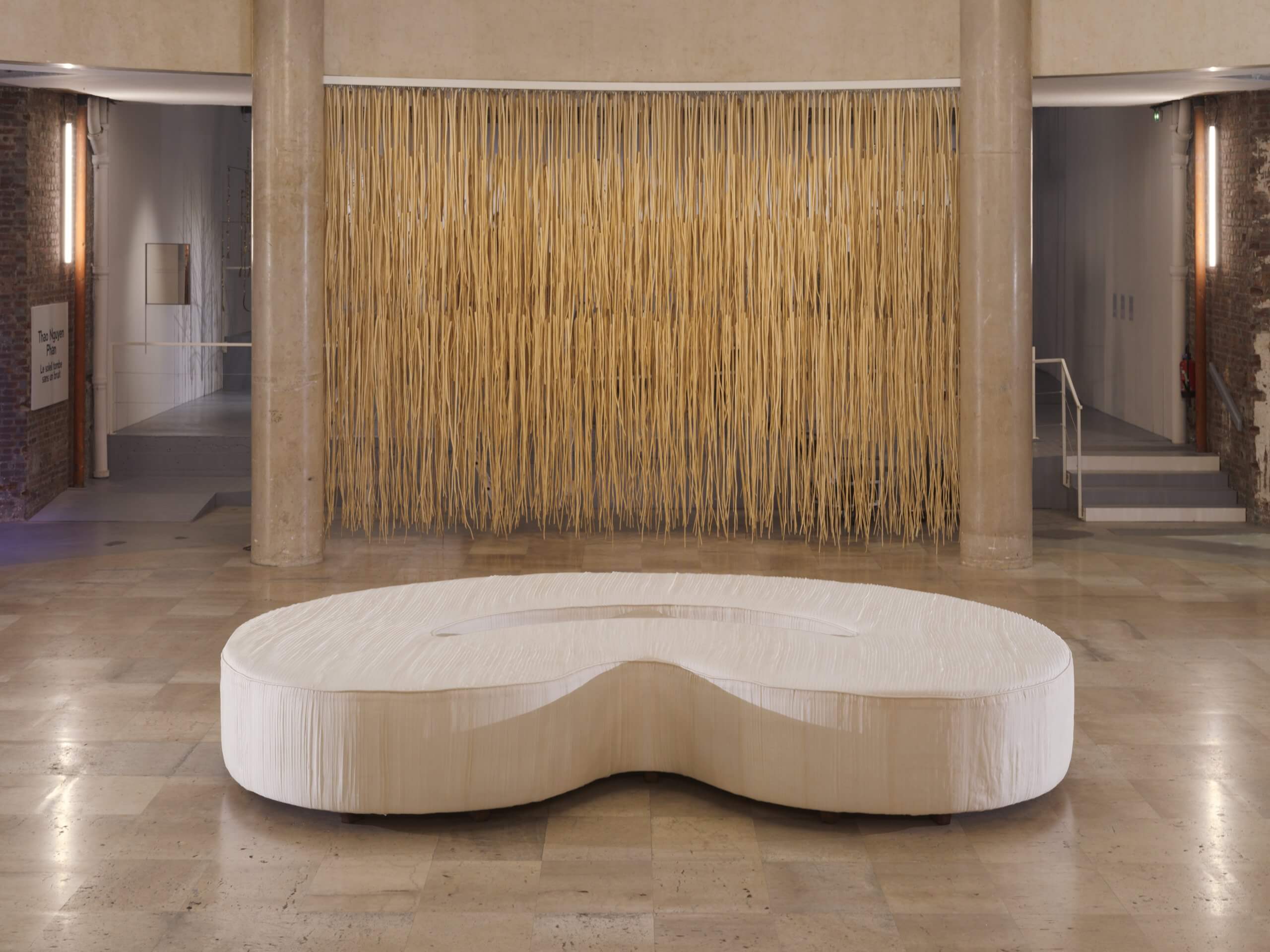
What is the role of literature and folklore in your work ?
TNP:Growing up in Vietnam in the 1990s and 2000s I had very little exposure to art but more to literature, as it was simply more available. The kind of international literature that was quite classical and traditional, that of Russia, China, and Europe. This interest in literature expands to the interest in folklore, which I later discovered by challenging the authenticity of the written format, as History is not only recorded in the official history books. It is embedded in local folklores or collective memories that are remembered by people, sites, or witnesses to traumatic events. The final representation of the art pieces embraces both recognised names, but also unheard minor literature and folkloric traditions from Vietnam, Cambodia, and the broader Mekong region.
What about craft and know-how, including indigenous ones ?
TNP:My training was quite rigorous, especially in terms of technique, so I’ve developed a deep interest in the craftsmanship involved in creating artworks. While I really like conceptual approaches to art-making, it’s important for me to make the art pieces myself. And it might seem idealized, but by being with the Jarai community I learned to gain knowledge from the simplification of life. The craftsmanship of the Jarai people is mostly inspired by the forest, while they have to make all of the things that supply their needs. In some ways, it inspires me. Also, because they are a matriarchal society, I do learn from this kind of woman-led society, which brings various alternatives about social organization.
So the poetry and simplicity of everyday life are very important to you ?
TNP:I try to keep a balance, because like many artists from a non-Western context, it’s easy to be drawn toward themes of trauma, violence, or political tension rooted in local history. But it’s not only about that. The poetry and the simplicity of everyday life is to see the dimension of becoming meaningful and profound in every single aspect of life. This perspective brings me joy in the act of creation, because artistic practice cannot be separated from the pleasure of making. It’s what gives me true freedom in my work.

Different life forms appear in your work: humans, plants, animals, rivers. What role do you give them ?
TNP:The main video installation in the exhibition is titled Reincarnations of Shadows (2025). It explores the life and work of Diem Phung Thi, but the title itself kind of broadens and summarizes my belief system that the moving image has the power to metamorphose and become something else. The same applies to other living and inanimate elements. I wouldn’t say my work is particularly environmentally related, but I attempt to take these elements into the most careful consideration possible.
How did you encounter Diem Phung Thi’s work, and how did you decide to create a dialogue between your practices ?
TNP:My father told me about this particular twentieth-century French-Vietnamese artist (1920-2002) who created this magnificent series of seven modules that can be combined and developed in countless ways. But I never saw her work until 2010 when I visited her museum in her hometown of Hue. Somehow, her work really resonated with me. I felt joy and happiness in her modules. Over time, I moved away from this initial interest until it resurfaced during an exhibition in Vietnam, titled Within / Between / Beneath / Upon at the Factory Contemporary Art Centre in 2021, which invited contemporary artists to engage in dialogue with a historical figure they admired. That concept immediately brought back my interest in Diem Phung Thi. I thus developed a video piece that has continued to evolve, culminating in this five-channel video installation at the Palais de Tokyo.
As a conclusion, your work combines history, colonial memory, and forgotten myths. How do you choose the stories you explore in your projects ?
TNP:I choose the stories by intuition at first. For instance, when I first saw Diem Phung Thi’s work, it spoke to me by its simplicity and its potentiality to metamorphosis. I then investigate the historical dimension, in a documentary and fictional way. In terms of colonial memory, I’m interested in how it is altered for ideological purposes and how people’s minds can be manipulated by the invention of a constructed official history. I also have this interest regarding forgotten myths, not only of Vietnam. I feel like the culture of mythology and the oral tradition still carry a certain aspect of truth and reality, more than official history.
